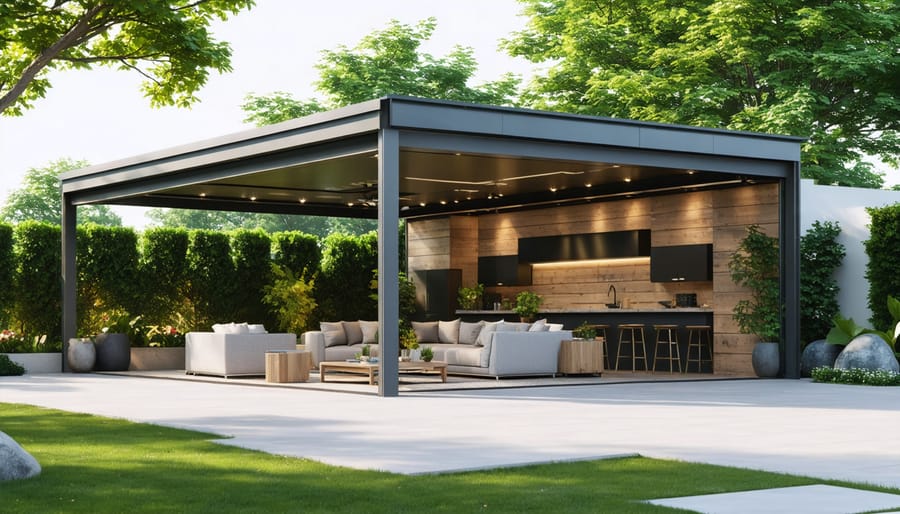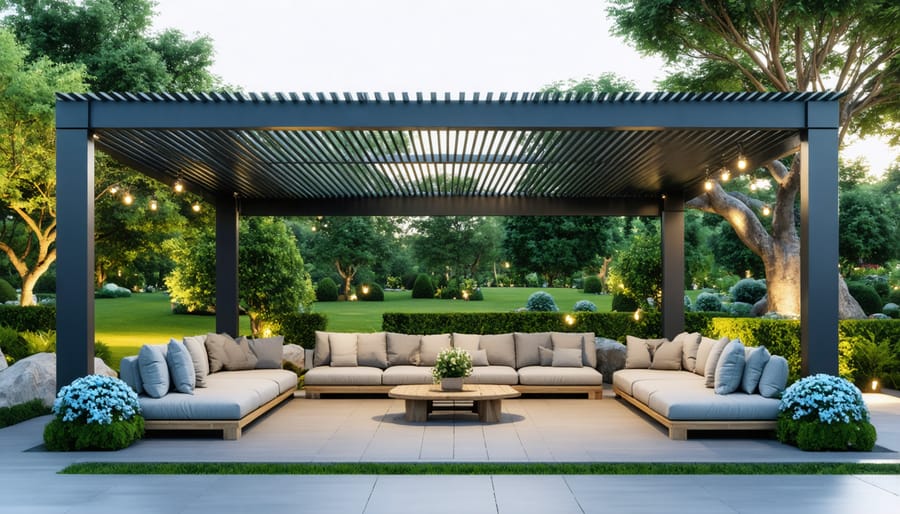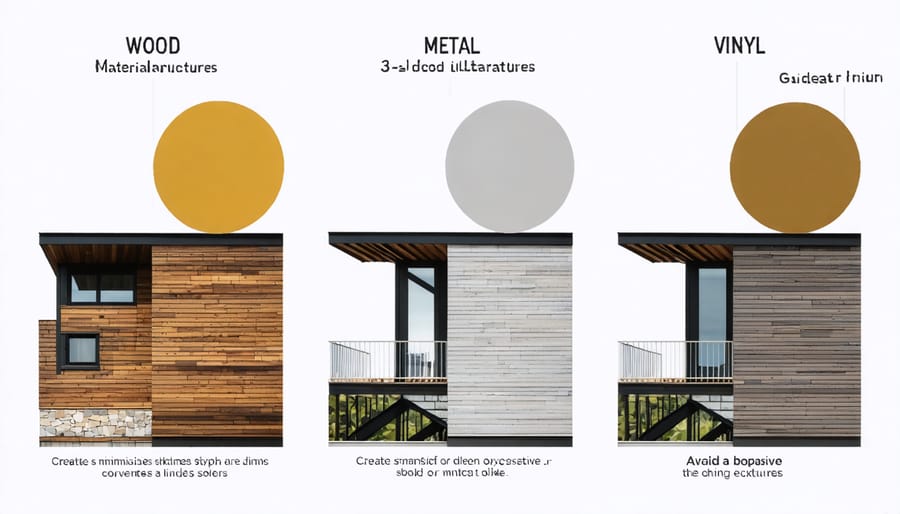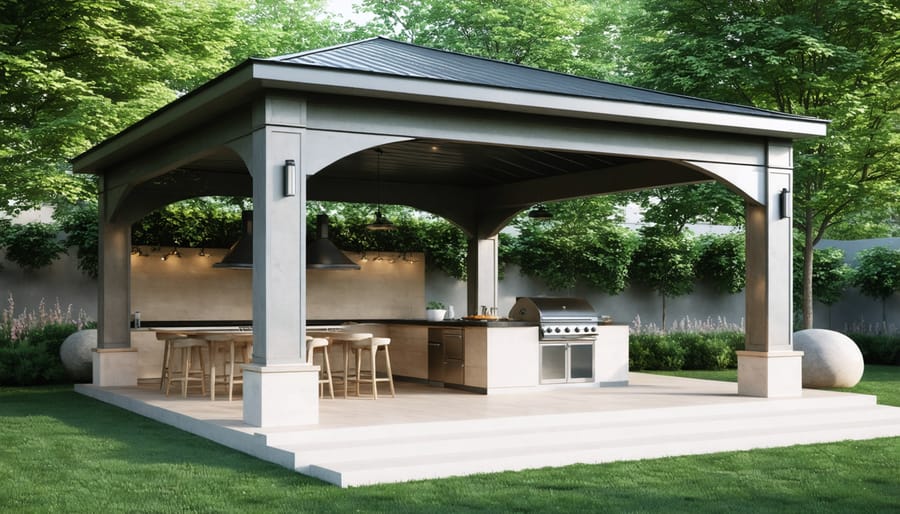Transform Your Outdoor Space with a Smart 3-Sided Shelter Solution

Transform your outdoor space into a versatile living area with a three-sided enclosure – the perfect balance between shelter and openness. These practical structures provide protection from wind and rain while maintaining an airy, connected feel to your landscape. Whether you’re creating a cozy outdoor dining space, a sheltered storage area, or a protected workspace, a three-sided enclosure offers remarkable flexibility without the commitment of a fully enclosed structure.
From simple lean-to designs attached to your home’s exterior to standalone pavilions that create an inviting backyard destination, these structures adapt to virtually any outdoor setting. Their open-front design ensures easy access while strategic positioning of the three walls maximizes protection from prevailing weather patterns. Modern materials like weather-resistant polycarbonate, treated lumber, and powder-coated aluminum make these enclosures both durable and low-maintenance, perfect for busy homeowners seeking lasting solutions.
Don’t let unpredictable weather limit your outdoor lifestyle – discover how a three-sided enclosure can extend your living space and enhance your property’s functionality year-round.
Why Choose a 3-Sided Outdoor Enclosure?

Protection Without Confinement
A three-sided outdoor enclosure offers the perfect balance between protection and accessibility. Unlike fully enclosed structures, these versatile shelters provide essential coverage while maintaining an open, airy feel. When choosing the right outdoor shelter, this design proves particularly beneficial for storing firewood, parking vehicles, or creating a sheltered workspace. The open side allows easy access for large items and creates natural ventilation, preventing moisture buildup that could damage stored belongings. The three walls effectively block prevailing winds and weather while the roof provides protection from sun and precipitation. This design also maintains clear sight lines and connects seamlessly with your outdoor space, making it feel less imposing than traditional four-walled structures. For homeowners seeking practical storage without the confined feeling of a fully enclosed building, a three-sided structure offers the ideal solution.
Year-Round Versatility
A 3-sided outdoor enclosure proves its worth throughout the year, adapting seamlessly to each season’s unique demands. During spring and summer, it serves as an ideal spot for storing gardening tools, lawn equipment, and outdoor furniture cushions while keeping them protected from sudden rain showers. Come autumn, it transforms into a perfect space for storing fallen leaf collection tools and winter prep equipment.
In winter months, the structure provides excellent coverage for firewood storage or winter sports gear, while still allowing easy access and proper ventilation. The open side allows for quick retrieval of seasonal items without having to navigate through a fully enclosed space. You can also modify the space seasonally – adding temporary coverage during harsh weather or removing it for better airflow during milder conditions.
Year-round versatility extends to various activities too, from creating a sheltered workstation for DIY projects to establishing a protected area for potted plants or a small greenhouse setup.
Popular Design Options and Materials
Material Choices and Their Benefits
When choosing materials for your 3-sided outdoor enclosure, you’ll want to consider durability, maintenance requirements, and aesthetic appeal. Each material option offers unique benefits, similar to selecting weather-resistant outdoor furniture for your space.
Metal enclosures, typically made from aluminum or galvanized steel, offer exceptional durability and require minimal maintenance. They’re resistant to rust, pests, and harsh weather conditions, making them ideal for areas with extreme climates. Metal options also tend to be more cost-effective in the long run due to their longevity.
Wood enclosures provide a natural, warm appearance that blends beautifully with outdoor landscapes. Cedar and pressure-treated pine are popular choices, offering natural resistance to decay and insects. While wood requires more maintenance, including periodic staining or sealing, it offers unlimited customization options and can be painted to match your home’s exterior.
Vinyl enclosures combine the best of both worlds, offering durability with minimal maintenance. They won’t rot, rust, or require painting, and they’re available in various colors and textures that maintain their appearance for years. While initially more expensive than other options, vinyl’s long-term value and low maintenance requirements make it an increasingly popular choice among homeowners.

Design Styles for Every Home
Three-sided outdoor enclosures come in a variety of design styles to complement any home’s architecture and aesthetic preferences. The classic ranch style features clean lines and a simple gabled roof, making it a versatile choice that fits well with most suburban homes. For those with modern homes, sleek flat-roof designs with metal or composite materials create a contemporary look while maintaining functionality.
Traditional farmhouse enthusiasts will appreciate barn-style enclosures with board-and-batten siding and decorative cross-buck doors. These designs often include charming details like cupolas or weather vanes that add character while serving practical ventilation purposes. Mediterranean-inspired designs feature stucco finishes and tiled roofs, perfect for homes in warmer climates.
The configuration options are equally diverse. Some homeowners opt for L-shaped designs that wrap around corners, maximizing space utilization while creating a sheltered nook. Others prefer a straight-wall design with varying heights to accommodate different storage needs. The open side can face any direction, though many choose to orient it away from prevailing winds and harsh weather.
For a more customized look, consider incorporating architectural elements from your home, such as matching trim colors, roofing materials, or decorative features. This attention to detail helps the enclosure feel like an intentional extension of your home rather than an afterthought.
Smart Installation and Placement Tips
Location Planning
Choosing the right location for your 3-sided outdoor enclosure is crucial for both functionality and longevity. Start by identifying a level surface or create one using proper grading techniques. The ground should have adequate drainage to prevent water pooling, which could damage stored items or compromise the structure’s stability.
Consider the enclosure’s primary purpose when selecting its position. For garden tools and equipment, place it near your gardening areas for convenient access. If it’s for firewood storage, ensure it’s easily accessible from your home while maintaining a safe distance from the main structure.
The enclosure’s opening should face away from prevailing winds and harsh weather conditions. This orientation helps protect your stored items from rain and snow while maximizing natural ventilation. South-facing positions typically offer the best balance of sunlight and protection.
Pay attention to local building codes and property lines. Most municipalities require structures to be set back a certain distance from property boundaries. Also, check for underground utilities before starting any ground work.
Ensure there’s enough clearance around the enclosure for easy access and maintenance. Consider overhead obstacles like tree branches or power lines that might interfere with the structure or pose safety risks.
Weather Considerations
When planning your three-sided enclosure, weather protection requires careful consideration to maximize its effectiveness. Position your structure with the open side facing away from prevailing winds and harsh weather patterns. This simple step can significantly reduce wind-driven rain and snow from entering the space.
Consider installing a slightly sloped roof that extends beyond the walls to create an overhang. This design feature helps direct rainwater away from the interior and provides additional protection for stored items. For areas with heavy rainfall, adding gutters along the roof edge can prevent water from pooling around the base of the structure.
In regions with strong winds, reinforcing the corners and ensuring proper anchoring is crucial. Installing wind braces at the top corners helps maintain structural integrity during storms. You might also want to consider removable side panels or curtains that can be attached during severe weather conditions.
For snow-prone areas, ensure your roof has adequate pitch and strength to handle snow loads. Using weather-resistant materials like treated lumber or metal panels will extend the life of your enclosure and provide better protection against moisture damage. Regular maintenance, including checking for water damage and ensuring proper drainage, will help your enclosure withstand various weather conditions throughout the year.
Creative Uses for Your 3-Sided Enclosure
Storage Solutions
Make the most of your 3-sided outdoor enclosure with smart storage solutions that keep your tools and equipment organized and easily accessible. Install heavy-duty wall-mounted hooks and brackets to hang garden tools, hoses, and frequently used equipment. Consider adding weatherproof storage cabinets or shelving units along the back wall to protect sensitive items from the elements.
Maximize vertical space by incorporating pegboards with adjustable hooks, perfect for storing smaller tools and accessories. For bulkier items, use corner shelving units that take advantage of otherwise unused space. Weather-resistant plastic bins and stackable containers can help categorize seasonal items while keeping them protected from moisture.
Create designated zones within your enclosure – one for gardening tools, another for power equipment, and a third for general maintenance items. This systematic approach makes it easier to find what you need and maintains a tidy appearance. Don’t forget to include a small workbench area for quick repairs and project preparation.
Living Space Extensions
Transform your three-sided enclosure into a versatile outdoor living space that seamlessly connects with your home. Consider adding comfortable seating arrangements with weather-resistant furniture and plush cushions to create a cozy lounging area. Add charm with string lights or solar-powered lanterns for evening ambiance. The open side provides natural ventilation while maintaining protection from elements on three sides, making it perfect for creating an outdoor kitchen space. Install portable heaters or fans depending on your climate to extend seasonal use. Roll-down screens or curtains can offer additional protection when needed while maintaining the open-air feel. Consider adding potted plants or vertical gardens along the walls to bring nature closer. A strategically placed area rug can define the space and add comfort underfoot, while built-in benches along the walls maximize seating while minimizing floor space usage.

A 3-sided outdoor enclosure offers the perfect blend of protection and accessibility for your outdoor storage needs. Whether you’re storing firewood, garden equipment, or creating a sheltered workspace, these versatile structures can transform your outdoor space while maintaining an open, accessible design. By carefully considering your specific needs, available space, and local weather conditions, you can select the perfect enclosure that adds both functionality and value to your property. Remember to prioritize quality materials and proper installation to ensure your structure stands the test of time. Take action today to organize and protect your outdoor belongings while keeping them easily accessible – your future self will thank you for making this practical investment in your home’s outdoor space.

